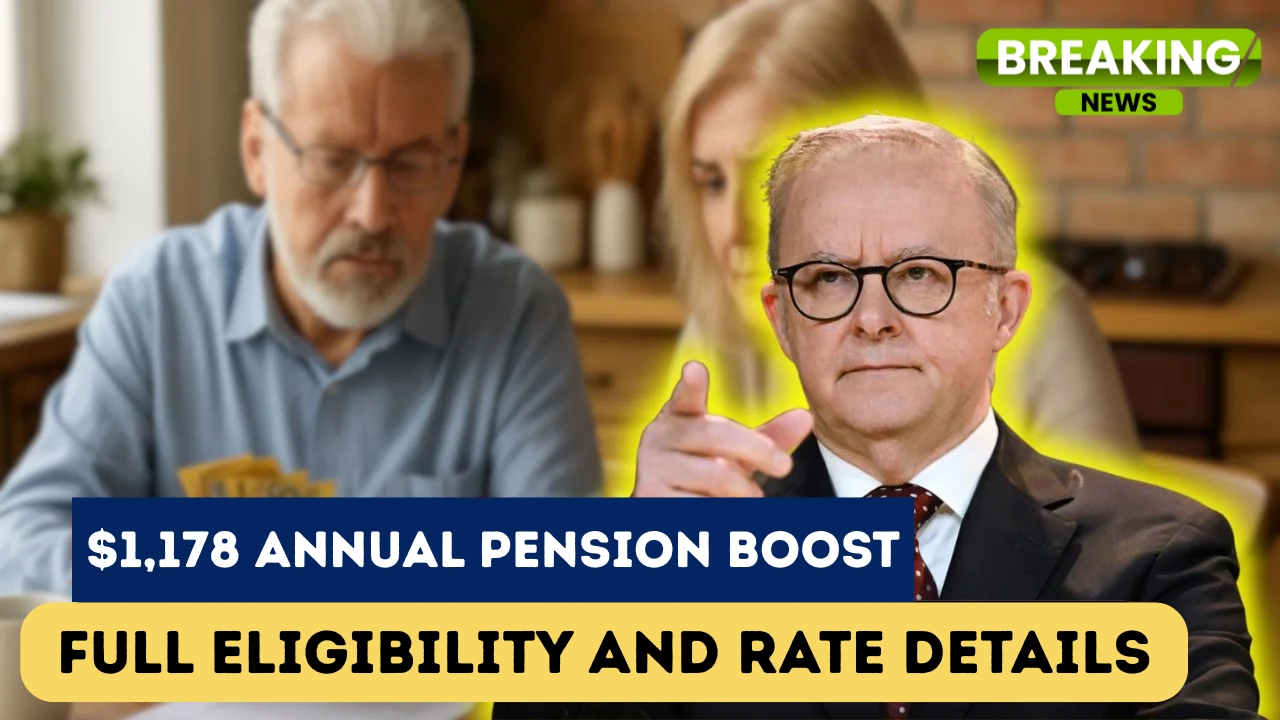Let’s cut right to the chase: many people are asking whether in 2025 their pension will go up, by how much, and whether they will be eligible. If you, like me, have pore over your pension statements and wondered “Wait, do I get that bump too?” — you’re in the right place.
In this article, I’ll walk you step by step through what a $1,178 rise might mean, who typically qualifies, what the limitations or caveats are, and how to check your eligibility. I’ll also include a handy table and a short FAQ toward the end to answer common doubts.
Why a $1,178 Increase?
First, on the face of it, $1,178 sounds like a nice round (if slightly unusual) number. If this is the annual increase being talked about, it equates to roughly $23 per week (or ~$1,178 ÷ 52 weeks). Alternatively, you might see it broken down in fortnightly payments, monthly payments, or via other indexing formulas.
Governments often tie pension increases to inflation metrics (CPI, RPI), wage growth, or a “lock” mechanism (e.g., a “triple lock” in some systems). The idea is to help pensions keep up with cost of living. In some countries, pension rise are automatic (no action needed), while in others you must apply or meet fixed thresholds.
So, in short: that $1,178 is a proposed or announced figure in a given scheme for 2025, meant to increase the baseline pension for eligible retirees.
What It Means to Qualify
Now — not everyone will see that full $1,178. Whether you qualify depends on a mix of rules. Here are the typical criteria, with commentary:
| Criterion | What It Usually Means | Caveats / Notes |
|---|---|---|
| Age / Retirement Status | You must have reached the statutory pension age (or be in the scheme’s “pensioner” class). | If you retire early or delay, some systems prorate increases. |
| Years of Contributions or Credits | You may need a minimum number of years of contributions, credits, or service. | Gaps (unemployment, low-income years) might reduce your portion. |
| Residency / Citizenship | Some schemes require you to be a citizen or legal resident, or maintain residency in the country. | If you move abroad, your entitlement might change or be limited. |
| Income / Means Test | In certain systems, if you exceed a threshold of other income, your pension increase is reduced or denied. | Means tests are controversial but common. |
| Scheme Specific Rules | The pension plan itself (public, private, or supplemental) may have its own rules about how much increase you get. | E.g., new vs old scheme members might have different rates. |
To be fair, these are fairly standard across many pension systems worldwide. But again — your specific country or pension authority might vary in how strictly (or loosely) they apply them.
So yes: you may qualify for the full $1,178, or you may only get a fraction, depending on your history, status, and scheme.
What You Might Actually Get (and What You Might Not)
Let’s walk through a few real-world caveats (so you’re not disappointed).
- Partial credit or prorated amount: If you were in retirement for part of the year, or only recently qualified, your increase might be pro rata. You might get, say, 6 months’ worth rather than a full year.
- Cap or “ceilings”: Some pension systems impose a maximum pension or cap. So if your pension is already near the top end, your $1,178 may bump you less, or not at all.
- Indexing differences: The $1,178 might reflect a generic rise for base pensions, but supplemental or defined benefit pensions might use different inflation measures, or even fixed increases.
- Inflation vs wage growth: If the scheme uses a hybrid measure (e.g., the greater of inflation or wage growth), sometimes pensions lag or leap based on which indicator is higher in a given year.
- Tax / deductions: That increase is typically before tax or deductions. You might see less in take-home pay.
How to Check If You Qualify
Okay, so you’re reading this and thinking, “Am I in on this?” Here’s what you should do right now:
- Check your pension plan documents or statements
See whether your pension scheme publishes its annual increases or indexing rules. Some plans explicitly state how they calculate increases. - Contact your pension authority or provider
Ask: “Am I eligible for the 2025 increase? If so, how much will I get?” Keep records of correspondence. - Check your contribution history or credits
If you have missing years or gaps, those may disqualify you from the full rise. - See if there’s a government announcement
Often pension rise are subject to legislation or budget approvals, so double check official government sources, not just media. - Watch for the payout timing
Sometimes the increase takes effect from a specified date (April 1, July 1, etc.). Until that date arrives, your pension might remain at prior levels.
In many cases, this increase is automatic (i.e. you don’t need to apply), but it’s always safer to confirm.
Example Scenario (Hypothetical)
Let’s imagine you are 67, fully retired, and have 30 years of contribution. Under the rules, full pensioners get a 100% share of the $1,178 hike. Because you qualify fully, your pension increases by $1,178 annually (i.e. $23/week). Because of how the accounting works, your first pay after the effective date will reflect a partial prorated amount (depending on the pay date). On the flip side, someone with only 20 years of contributions might get, say, 20/30 = 66.7% of that bump (i.e. ~$785). That’s how it often goes in tiered schemes.
Remember — real schemes might use different formulas, but that gives the flavor.
Why These Increases Matter — and Why They Are Hotly Debated
Honestly, pension increases are more than just extra dollars — they’re about dignity, fairness, and keeping up with inflation. If pensions don’t keep pace, retirees’ purchasing power erodes rapidly. On the flip side, governments must balance fiscal sustainability; too generous an increase strains public coffers.
These bumps also get political. In many places, pensioners vote, and the promise of decent increases is a powerful tool. Moreover, with demographic shifts (ageing populations), paying for pension increases gets tougher over time.
It’s not always smooth; sometimes a promised increase gets delayed, scaled back, or challenged in courts or parliaments. So while $1,178 might be on the table now, always keep an eye on official confirmation.
FAQ (Frequently Asked Questions)
Q1: Do I need to apply to get the increase, or is it automatic?
A1: In most pension systems, the increase is automatic (you don’t need to apply) — provided you already qualify. But always confirm with your plan or authority.
Q2: What happens if I have missing years of contribution — do I lose the full bump?
A2: Possibly. If your scheme proratas the increase based on years contributed, a gap may reduce your share. But sometimes there are “make-up” options.
Q3: Will the increase be taxed or reduced by deductions?
A3: Yes — that new amount is usually before taxes or deductions. Your net gain might be lower.
Q4: When will I start receiving the increased payments?
A4: Often from a fixed date (e.g. April 1, July 1). Your first payment after that will reflect the full or partial raise. Check your plan’s schedule.
Q5: Could the promised $1,178 increase be changed or rescinded?
A5: Unfortunately, yes — if budgets change, legislation fails, or economic conditions worsen, the increase might be scaled down, delayed, or altered.




